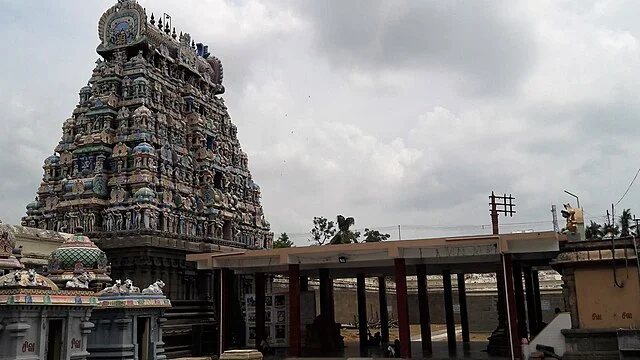Vedaranyeswarar Temple, located in the town of Vedaranyam, Tamil Nadu, India, is a prominent and ancient Hindu temple dedicated to Lord Shiva. This temple holds significant historical, cultural, and religious value, making it an important site of worship and study for scholars of South Indian history and temple architecture.
Get your dose of History via Email
Historical Background
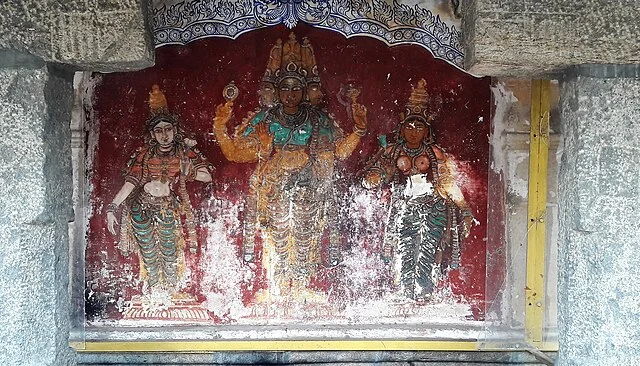
The Vedaranyeswarar Temple has a long and documented history that dates back to the early medieval period. Historical records indicate that the temple’s origins could be traced back to the 8th century AD. Early Chola rulers constructed and expanded the temple, and the site gained prominence under the Chola dynasty, which ruled Tamil Nadu from around 850 AD to 1250 AD. King Rajendra Chola I and subsequent rulers made substantial contributions to the temple’s architectural grandeur, and it became a focal point of Saivism, a major branch of Hinduism devoted to Lord Shiva.
Architecture and Layout
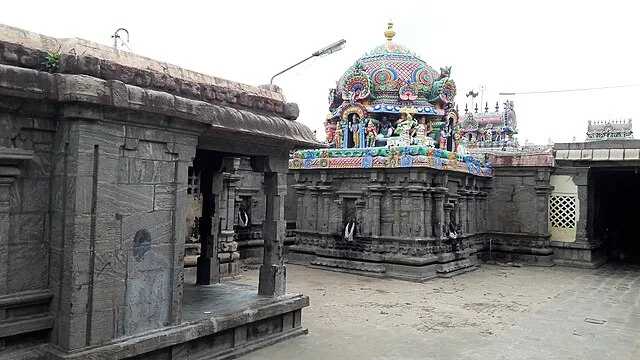
The architecture of Vedaranyeswarar Temple is characteristic of early Dravidian temple designs. The temple features a prominent rajagopuram (main gateway tower) that stands tall and intricately decorated. The sanctum sanctorum (garbhagriha) houses the main deity, Vedaranyeswarar, in the form of a lingam, symbolizing Lord Shiva. Surrounding the main shrine are additional shrines dedicated to various deities, including Parvati, represented here as the goddess Vedaranyeswari.
The temple complex is enclosed by large granite walls, which are typical of Chola temple construction. A large courtyard provides space for devotees and ritual ceremonies. The layout of the temple follows the principles of Agama Shastra, ancient Hindu scriptures that guide temple design and ritual practices. The intricate carvings and sculptures adorning the walls and pillars depict various scenes from Hindu mythology, offering insight into the artistic styles and cultural narratives of the time.
Religious Significance and Legends

Vedaranyeswarar Temple holds significant religious importance within Saivism. Devotees believe that Vedaranyeswarar embodies the “Lord of the Vedas.” According to temple legend, the four Vedas, sacred Hindu texts, once took human form and worshipped Lord Shiva at this site. This association with the Vedas gives the temple its name and establishes it as a sacred site for followers of Hinduism, particularly those devoted to Lord Shiva.
One of the central legends involves the famous Shaiva saints Appar and Sundarar, who are said to have visited this temple and sung hymns in praise of Vedaranyeswarar. The temple is therefore one of the Padal Petra Sthalams, the 275 temples celebrated in the devotional Tamil Shaiva canon known as the Tevaram.
Festivals and Rituals
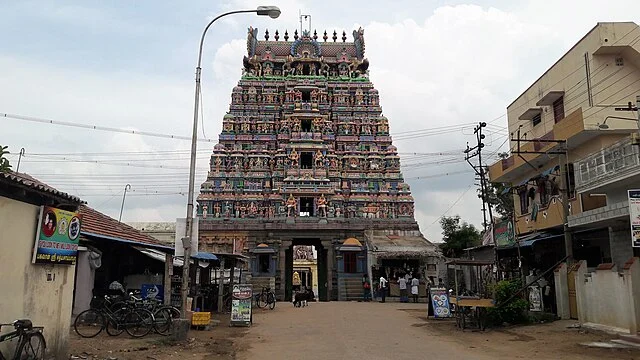
Vedaranyeswarar Temple hosts several annual festivals that draw large numbers of devotees from across Tamil Nadu. The most notable is the Maha Shivaratri festival, which honors Lord Shiva through night-long prayers, rituals, and ceremonies. Another important event is the Panguni Uthiram festival, celebrated in March or April, which commemorates the divine marriage of Lord Shiva and Goddess Parvati.
The temple also follows a daily ritual schedule, including four main puja (worship) sessions. Priests perform these rituals following Agamic traditions, which involve the chanting of Vedic hymns, offerings of food, and abhishekam (anointing) of the deity with water, milk, and other sacred substances. These rituals create a continuous connection between the deity and the devotees, fulfilling both spiritual and cultural roles within the community.
Art and Cultural Heritage
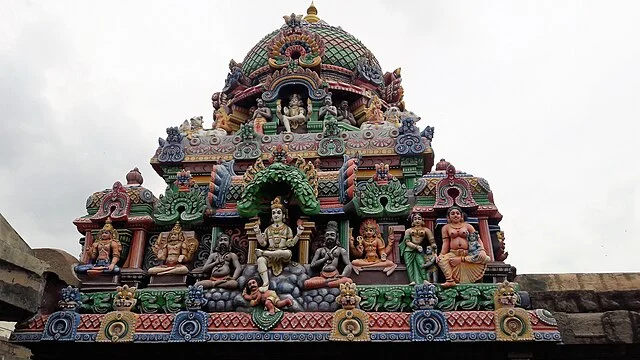
Vedaranyeswarar Temple’s art and iconography provide insight into Tamil Nadu’s rich cultural heritage. The temple is adorned with murals, stone reliefs, and sculptures reflecting the Chola artistic style, known for its emphasis on lifelike depictions and dynamic poses. Figures of gods, goddesses, and mythological scenes carved into the walls represent episodes from Hindu scriptures, particularly from the Shaiva tradition. The temple’s iconography also includes elements from the Bhakti movement, highlighting the role of devotion in Tamil religious history.
Conservation and Preservation
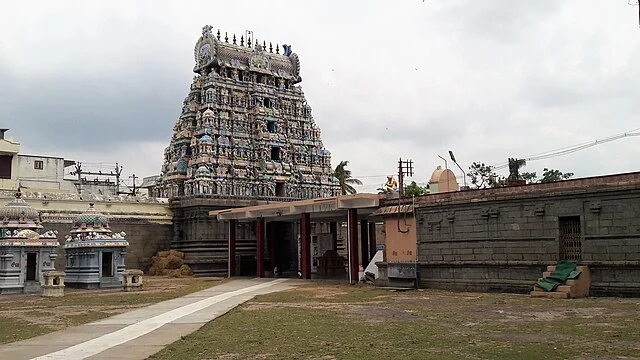
The temple’s historical value and architectural beauty necessitate careful preservation. The Archaeological Survey of India (ASI) has recognized Vedaranyeswarar Temple as a protected site, allowing for periodic restoration to maintain its structural integrity and cultural significance. Conservation efforts focus on preserving original inscriptions, structural components, and artworks. These initiatives ensure that the temple remains a vital part of Tamil Nadu’s cultural landscape, accessible for future generations to study and appreciate.
Conclusion
Vedaranyeswarar Temple Vedaranyam stands as a testament to Tamil Nadu’s architectural, cultural, and religious history. Its blend of myth, devotion, and historical significance provides a comprehensive view of Tamil heritage. For historians, archaeologists, and devotees alike, this temple offers a wealth of knowledge and continues to be a place of reverence and study.
Source:

